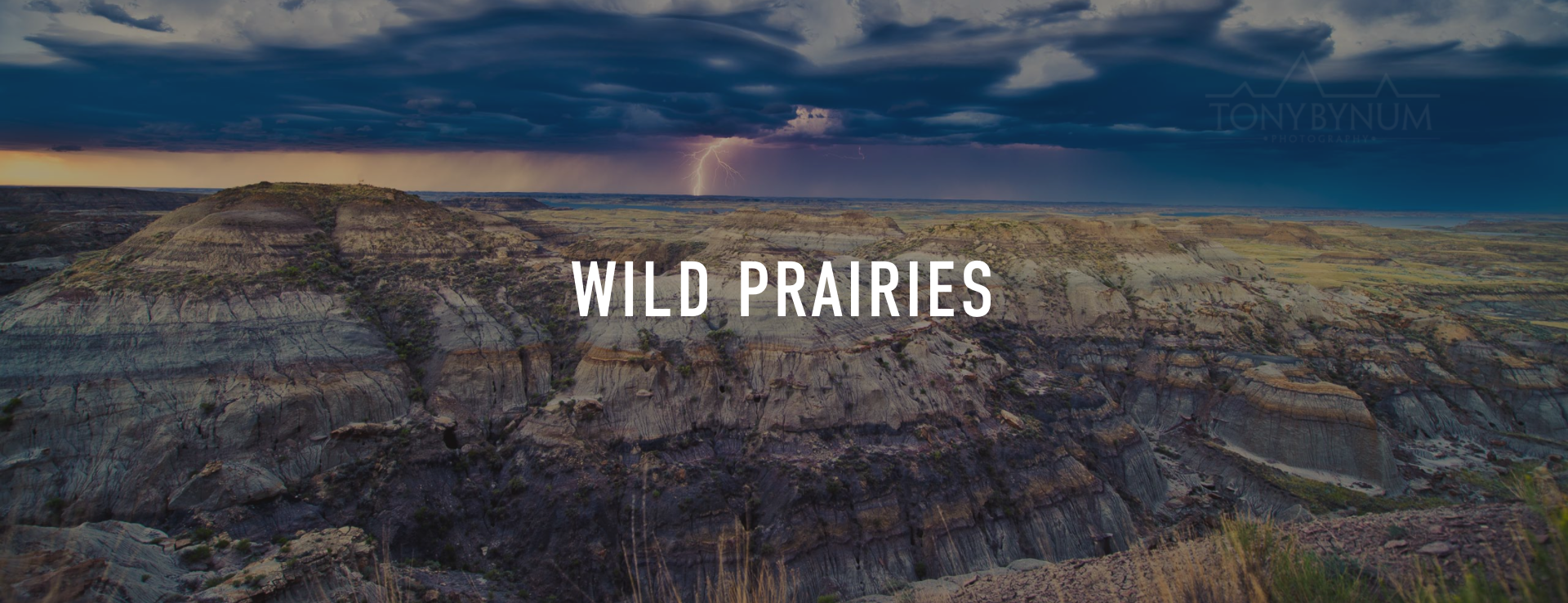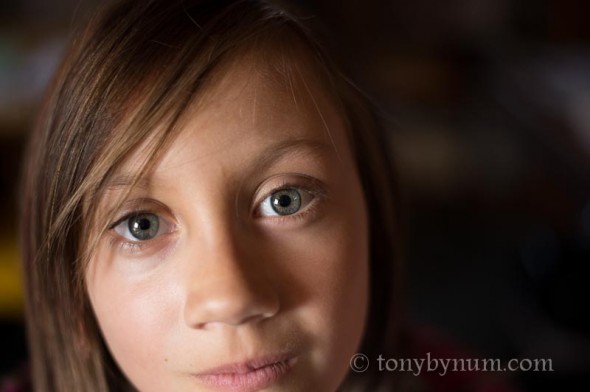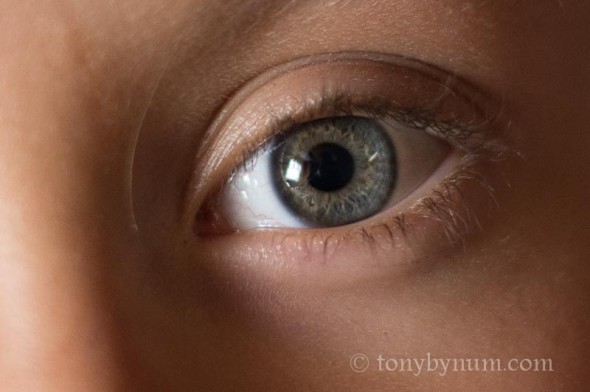Big Skies and Badlands - Photographing Eastern Montana Lightning
Every year I make time for a trip or two to the badlands of Eastern Montana. The badlands are located where you find them - meaning you just have to tour around until you see them. Why, because I'm not even sure what badlands are these days. I mean, it seems that at least in Montana if something is a badland it inevitably must have some good land mixed in with it - right? So to the best of my knowledge, the "badlands" part is the steep sided, highly erosive, clay soil areas found throughout the eastern and central Montana prairie lands. The areas you can't really ride a horse through, or drive a pickup in, especially if they're wet! Don't argue with me, I know some of you will say, "I could ride MY horse across that country," and some of you would be "right," but in general, these areas are difficult to cross on foot and in most cases you'll need to park your horse. Here's a photographic example of the badlands of Eastern Montana taken near Fort Peck Lake. This photograph is one of my favorites from this summer's adventures. After spending about 40 days on the road shooting and studying the land and it's critters, and watching countless clouds build, spill rain, and blow by, I finally wound up in the right place at the right time with the right conditions to capture an interesting photograph.
There are countless fantastic subjects to photograph under the big skies of Montana. I particularly enjoy photographing the badlands when I find them. I also like the areas I find in between those badlands. What do we call the areas in between the badlands, are they the good-lands? Hum, I'll explore the areas in between in my next post.
For now, remember to keep a safe distance from lightning. Lightning strikes do kill people every year.
Tony Bynum
Nikon D4 Simple Review - Why Do I Need a D4?
I met the delivery guy halfway. I knew what he had for me. The Nikon D4 had just arrived. I signed for it, brought it in the house, cut open the box, charged the battery, ran through the set up and then shot a few photos. (no I did not read the manual or the quick setup guide first - I'm a guy). The 16.2 MP full frame FX D4 is Nikon's new "flagship" camera. It's targeted toward the action, adventure, sports photographer including commercial outdoor photographer, nature and wildlife photographer, and journalist. It's a tough rugged camera made for using hard all the time. This is not a toy and not a camera I would recommend for anyone not using it to make money (there are cheaper alternatives) - unless of course you like the newest toys and can afford to spend a small fortune on a fun new gadget. For me, the D4 will be used for wildlife, some nature, people, and outdoor commercial, and journalistic photography. It will be my main outdoor photography camera from here on out.
I create images outside where temperatures range from -40F to 100 degrees. I often work in extreme conditions that include wind, driving rain and snow! It is imperative that I have a camera that can operate under extreme conditions. I also shoot indoors, some and often don't have the time to properly light the area, so the low light ISO and focusing improvements will be helpful. The low light focus will also come in handy if I add a tele-converter and drop down to f8. So far, in all of my experience as an adventurer, wildlife and outdoor commercial photographer, I've never had a Nikon camera fail me in the field do to factory defects. Don't get me wrong, I've had my share of problems and have a budget line item for repairs, but it's never been due to harsh weather or bad field conditions that I've had to send in a camera body. Nikon cameras are, in a word, tough!
Here's a single frame, shot @ iso 1600, unprocessed, straight from the camera, followed by a one-to-one or 100% enlargement of the eye, again no post processing (of course some processing is done by the computer and certainly the camera has to turn light into digital data and then into an image, so some processing occurs, but no "extra" processing was involved in these images, they were shot in NEF - Nikon's raw format, and exported from Lightroom 4.
My first impressions, "the D4 is a new benchmark." For a "test" shot, I purposefully shot the D4 indoors at iso 1600 with a 50mm 1.8 lens just to get an idea of what this new flagship dslr from nikon could do under those types of conditions. Often when shooting wildlife and people, we are nearly the margins of available light, so that's where hi ISO and low light focusing come in handy. I snapped a few shots, loaded them on to my computer via Lightroom 4. I was very impressed with the files. They were clean and crisp right out of the camera - I'd say better than the D3s, and D700, Nikon's two famous low light cameras that initially raised the low light shooting bar 5 years ago. Wouldn't you think you should be able to notice a difference between a camera that's been out for 5 years and one that just hit the streets? I would.
The auto focus seems snappier, and faster than previous cameras. The body is noticeably lighter! Whoohooo . . . I'm not sure how much lighter, but I can tell, just by holding it, that's it's lighter. How about if I just bullet point a few more things from hear on out. . .
Cool things:
* the buffer will handle 100+ raw images and 200 jpg's . . . and shoot at 10 and 11 fps.
* 1080p video and a ton of other optional video settings (guys like Cory Ritch have been cranking out videos, here's one)
* multi crop mode selections - FX - full frame, 4/5, DX - or 1.5x, and 1.2x or 30x20
* metering is unreal, I cant fool this thing . . . (I shoot manual all the time, so I'm going to explore the metering a bit more)
* modified shutter release angle to make it less stressful to shoot all day long, it's for real, and it works;
* shipped with a 16 MB xqd card and reader - some say this was a bad move, I'm think it's great when companies step out and push the limits in order to make their product the best in the world!
* new batterie - said to meet the higher demands of video - sad thing is it wont last as long, only 2000 plus shots . . .
* buttons light-up when it's dark out
* you run the camera with an ipad - cool but not sure when I'm going to do that . . .
* auto focus works down to pitch black - almost bit it's unreal how well the camera can focus in low light!
* great video options
* 400,000 click shutter - that's 100,000 k more than the D3!
* compatible with the ipad and iphone - you can run this thing with the ipad!
* manuals are online and downloadable to your ipad or iphone - way cool!
Weird things:
* Cant use the older enel4 series batteries - have to buy a back up battery, they are $200 if you can find one (which I just did, it will be here monday).
* Extra xqd card not available yet.
* No built in Wifi yet - why my phone can do it, but not my is dumb, come on nikon. (in fairness you can spend another $900 and get the gadget that will make the camera wireless).
Final Thoughts - why I need a D4
Overall, this is a great new camera. I purchased it to replace other cameras that are at the end of their lives. . . The reality is, they may last a bit longer, but why chance it if I'm going to have to replace them within the year anyhow, and why wait till they break - as you know, they will always break right when you need them to work! I also wanted superrior video performance and this is the first pro level dslr that integrates both 1080p, and a fully weathered pro body into one camera. The D4 is not much of a revolutionary camera like the D3 was when it came out. The D4 is the workhorse with a some great new improvements most of which are really just evolution's, not new species. But when you already created a completely new dimension in cameras with the D3 improving on perfection is still improving! For me, this is a must have camera. Your mileage may vary!
There are a number of much more indepth reviews on the internet (you can google, nikon D4 review, here's one I like from Brian Tobey, and another from digital camera info) done by people who review stuff cuz that's what they do. In this piece I tried to give you a snap shot of what I like about the camera and why, I choose to get one shipped before they were available to the rest of the consumer market.
Lets connect on facebook and twitter.
Cheers,
Tony
Spring Waterfowl Photography - Northern Pintail Ducks
As a commercial outdoor, wildlife, and nature photographer I’m constantly drawn to unique wildlife photography opportunities, particularly when there is real action. One can hardly ignore jet fighters flying in formation. Sometimes we stop the car just to watch the display. People even pay money to go to air shows just to watch them fly. What does that have to do with nature photography? Northern Pintail Ducks are the F-16 of the duck world. The annual migration of waterfowl is underway across Montana. It’s one of my favorite times of year. The days are getting longer, the ice is melting off our rivers and lakes, the weather is unsettled, clouds are always changing, and the light is useful nearly all day. Of all the waterfowl I watch, my favorite species to photograph are pintails.
On a recent three day trip to my favorite waterfowl location in Montana, I was reminded of just how much fun and challenging it is to photograph pintail ducks. For every "keeper" I must have a hundred shots that go in the trash. Pintails are easy to identify in the spring. Their colorful feathers and sharp, pointed tail are present only during the breeding season, much to the dismay of most hunters. The colorful males don't carry their tail during the fall when most hunters see them down the sights of their shotguns. Pins, as they are called, fly fast, really fast! In fact they are one of the fasts ducks in north American, and when multiple birds fly together, in formation they are a thrill to watch!
This photograph shows a typical, “courtship flight," consisting of several males and one female (the female is hidden behind the males). These flights occur on and off throughout the day. The group of pintails, usually four to as many as a dozen consisting of mostly males and one to two females, will fly swiftly, rinsing and dodging above the water in a remarkable display of speed, accuracy and agility. In this photograph, a male sprig (another word for pintail) takes flight.
Typical day:
1. find birds before sunrise; 2. hike to a suitable location; 3. get in my portable hide/blind before sun up; 4. sit on butt and at times knees till it gets dark all the while following the birds with my camera and lens mounted on a gimble head.
Could you ask for anything more fun! I didn't think so! Next time, more waterfowl, one of north America's most prolific wildlife displays, the migration of the snow geese . . . Stay tuned!
Sincerely, Tony Bynum





